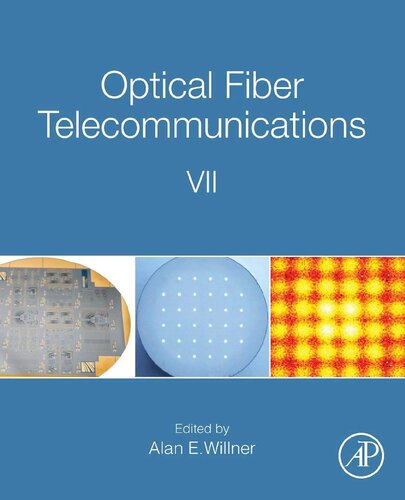

Most ebook files are in PDF format, so you can easily read them using various software such as Foxit Reader or directly on the Google Chrome browser.
Some ebook files are released by publishers in other formats such as .awz, .mobi, .epub, .fb2, etc. You may need to install specific software to read these formats on mobile/PC, such as Calibre.
Please read the tutorial at this link. https://ebooknice.com/page/post?id=faq
We offer FREE conversion to the popular formats you request; however, this may take some time. Therefore, right after payment, please email us, and we will try to provide the service as quickly as possible.
For some exceptional file formats or broken links (if any), please refrain from opening any disputes. Instead, email us first, and we will try to assist within a maximum of 6 hours.
EbookNice Team

Status:
Available4.4
14 reviewsOptical Fiber Telecommunications, Volume Eleven, covers the latest in optical fiber communications and their potential to penetrate and complement other forms of communication, such as wireless access, on-premises networks, interconnects and satellites. This updated edition of this classic, first published in 1979, examines opportunities for future optical fiber technology by presenting the latest advances on key topics, such as 5G wireless access, inter and intra data center communications,
THz technologies, secure communications, and free space digital optical links.
Topics of note include sections on foundries for widespread user access, designing photonic integrated circuits (PICs), monolithic and hybrid integration technologies, nanophotonics, and advanced and non-conventional data modulation formats. The traditional emphasis of achieving higher data rates and longer transmission distances are also addressed through chapters on space-division-multiplexing using multimode and multicore fibers, undersea cable systems, and reconfigurable networking.
This book is an indispensable reference on the latest advances in key technologies for future fiber optic communications. It is suitable for university and industry researchers, graduate students, optical systems implementers, network operators, managers and investors.